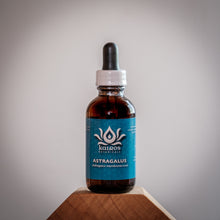Used for thousands of years in Chinese medicine, the Astragalus root is utilized as a powerful immune booster. An adaptogen, Astragalus helps to protect the body against various physical, mental, and emotional stresses. Also has anti-bacterial, anti-inflammatory, and anti-viral properties.
Made from fresh-harvested and dried roots. Triple extract.
Bottle: 50ml
-----------------------------------
Would you like to know more? Below you can find an excerpt from our book "Medicinal Perennials to Know and Grow"
Used for thousands of years in Chinese medicine, the Astragalus root is utilized as a powerful immune-booster. An adaptogen, helping to protect the body against various physical, mental, and emotional stresses. Also has antibacterial, anti-inflammatory, and antiviral properties. Made from organically grown, fresh harvested and dried root.
Astragalus has been a highly revered herb in Chinese medicine for thousands of years. It is known as Huang Chi.
Preparations of its root provide a lifting energy that helps build resistance to weakness and disease. Its warming properties help tone the spleen, kidneys, lungs and blood. It balances the energy of all internal organs, improves digestion and protects the liver from toxic compounds. Laboratory and clinical studies confirm its abilities to stimulate the immune system, fighting bacteria, viruses and inflammation and helping patients who are undergoing chemotherapy and radiation treatments.
This premier Chinese medicinal herb builds a protective shield around the body just below the surface of the skin that keeps out cold and dampness. There are no warnings about side effects in the literature.
Astragalus is rapidly gaining popularity in North America and is often included in blends with other medicinals to promote recovery in times of stress or illness.
In China, astragalus is found along forest margins, shrub thickets and open woods. It is a perennial that grows to 4 feet, with delicate yellow, pea-like flowers from midsummer through fall. It does not like “wet feet” but prefers dry sandy soil in full sun or partial shade.
Many sources for growing astragalus recommend freezing the seed for three weeks and then scarifying the tough seed coat with fine sand paper to facilitate water absorption and germination. We have often had rapid germination without doing either of these. Start seeds indoors in later winter after soaking them for a day or two. Transplant seedlings in spring to a little over a foot apart after danger of frost has passed. Protect well with a mulch of leaves, straw or hay for winter.
The roots are harvested for medicine when the plants are three years old. Traditionally, they are sliced lengthwise or into thin diagonals that look like tongue depressers.




